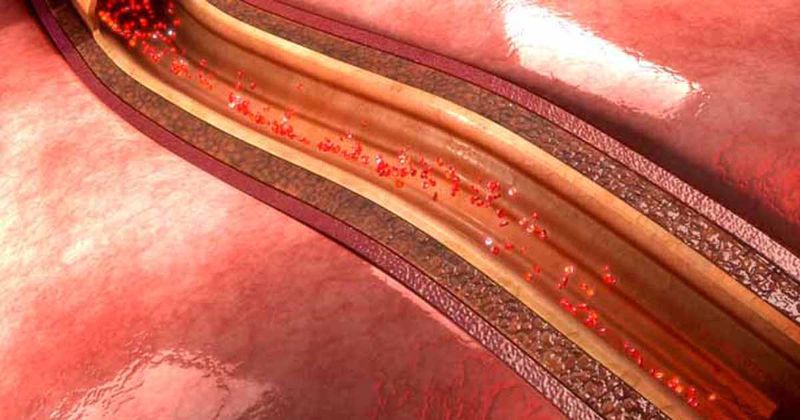Icosapent ethyl ‘could have relevance’ for lowering CV risk in adults with CAD on statins
Key takeaways:
- In patients with CAD and low EPA:AA ratio on a statin, icosapent ethyl reduced coronary events.
- CV events were numerically fewer with icosapent ethyl, but the difference vs. controls was not significant.
Icosapent ethyl significantly reduced coronary events and led to numerically fewer CV events at 5 years for patients with CAD and low plasma eicosapentaenoic acid already taking statin therapy, researchers reported.
A post hoc per-protocol analysis suggested icosapent ethyl (Vascepa, Amarin) significantly reduced both CV events and coronary events in this patient population.

The 5-year results of the prospective, multicenter, randomized, open-label, masked endpoint RESPECT-EPA study of icosapent ethyl for patients with CAD and low eicosapentaenoic acid/arachidonic acid (EPA:AA) ratio already on statin therapy were published in Circulation.
“Observational studies have suggested an association between a low ratio of plasma levels of EPA to AA and an increased risk of atherosclerotic cardiovascular events,” Katsumi Miyauchi, MD, of the department of cardiovascular biology and medicine at Juntendo University Graduate School of Medicine in Tokyo, and colleagues wrote. “To date, no study has evaluated the efficacy of highly purified EPA intervention in patients with CAD, a low EPA:AA ratio, and statin treatment. Therefore, RESPECT-EPA ... was designed to assess whether highly purified EPA (icosapent ethyl) could prevent the recurrence of cardiovascular events in patients with CAD and a low baseline EPA:AA ratio.”
The RESPECT-EPA trial
For the RESPECT-EPA trial, 2,506 adults with chronic CAD and low EPA:AA ratio receiving statins for at least 1 month before study inclusion were randomly assigned to 1,800 mg icosapent ethyl daily or a control group.
Low EPA:AA ratio was defined as less than 0.4.
The primary endpoint was a composite of CV death, nonfatal MI, nonfatal stroke, unstable angina and coronary revascularization. The secondary endpoint was a composite of coronary events including sudden cardiac death, fatal and nonfatal MI, unstable angina requiring emergency hospitalization and coronary revascularization or coronary revascularization.
As Healio previously reported, at 4 years follow-up, the EPA group showed borderline statistical significance in reduced risk for adverse CV events and hinted at possible benefit in participants with low EPA:AA ratio.
In the present study, the median EPA:AA ratio was 0.243 in the EPA group and 0.235 in the control group.
At 5 years, primary endpoint occurred in 9.1% of the EPA group and 12.6% of the control group, translating to an almost significant difference (HR = 0.79; 95% CI, 0.62-1; P = .055).
However, the 5-year risk for the secondary endpoint of coronary events was lower in the EPA groups compared with the controls (6.6% vs. 9.7%; HR = 0.73; 95% CI, 0.55-0.97; P = .031).
Icosapent ethyl benefit hinted in a post hoc analysis
After the researchers excluded 681 participants with study discontinuation or protocol violations in a post hoc analysis, they reported reduced risk for both the primary (HR = 0.69; 95% CI, 0.5-0.95; P for stratified log-rank = .021) and secondary endpoints (HR = 0.63; 95% CI, 0.45-0.89; P for stratified log-rank = .009) in the EPA group compared with controls.
There was no significant difference in adverse events between the two groups, except for new-onset atrial fibrillation, which was higher in the EPA group compared with controls (3.1% vs. 1.6%; P = .017).
“[Icosapent ethyl] treatment was significantly associated with a decreased risk of the secondary composite endpoint of coronary events, including sudden cardiac death, myocardial infarction, unstable angina, or coronary revascularization,” the researchers wrote. “Furthermore, an additional per-protocol analysis that excluded patients with drug discontinuation or protocol violation showed that icosapent ethyl treatment was significantly associated with reduced risk of the primary endpoint and secondary composite endpoint of coronary events.
“These results collectively suggest that EPA could have relevance in reducing future events in patients with chronic CAD and a low EPA:AA ratio (< 0.4) who received statin treatment, consistent with the results of two previous EPA trials (JELIS and REDUCE-IT),” the researchers wrote.
